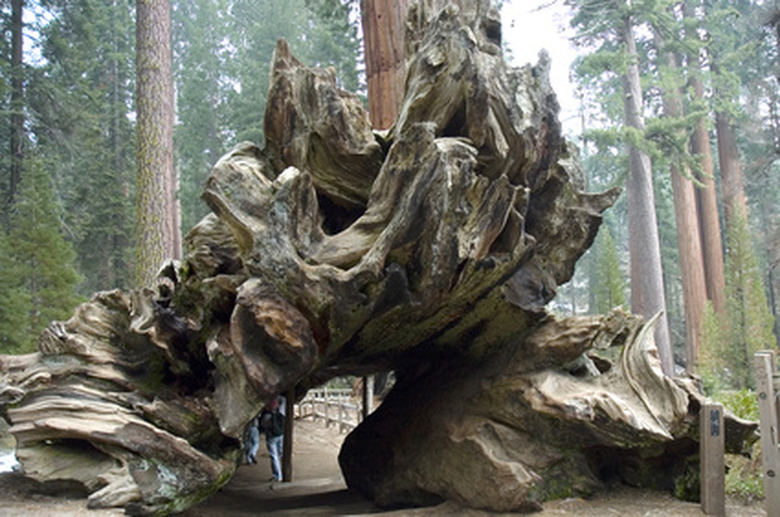Planting Redwoods
Redwood trees (Sequoia sempervirens) are hardy, evergreen, very tall growing trees that can easily stand more than 100 feet. They are usually recognized by their bright-orange to amber-colored bark and pyramidal form of growth. Redwood trees are indigenous trees to North America and are hardy in the USDA Zones 7 to 10. Before planting a redwood tree, choose your planting area carefully. Avoid planting redwood trees over any buried cables or piping or near any structures or other trees.
Step 1
Prepare the planting area for the redwood tree. First, use a garden hoe to eliminate all weeds and their roots. Turn over the soil with a garden fork, or a shovel to a depth of about 12 to 16 inches. Remove any rocks or sticks from the soil.
- Redwood trees (Sequoia sempervirens) are hardy, evergreen, very tall growing trees that can easily stand more than 100 feet.
- First, use a garden hoe to eliminate all weeds and their roots.
Step 2
Dig a planting hole for the redwood tree that is 2 feet wide by 3 feet deep. This is a suitably sized planting hole for a redwood tree that is growing in a 1-gallon, 2-gallon or 5-gallon container. If you are intending to plant redwood trees in a grove, space each of the planting holes 8 to 10 feet apart.
Step 3
Mix into the soil you removed from the planting hole 1pound of iron sulfate and 2 cubic feet of aged manure, as recommended by Sunset's Western Garden Book. This combination of manure and iron sulfate can ensure the redwood tree will grow and prosper in most soil types.
Step 4
Scoop in the aged manure, iron sulfate and soil mixture back into the planting hole until it is half-full of soil. Then pour water into the hole to fill the hole with water. Let the water fully dissipate before proceeding.
- Dig a planting hole for the redwood tree that is 2 feet wide by 3 feet deep.
- Scoop in the aged manure, iron sulfate and soil mixture back into the planting hole until it is half-full of soil.
Step 5
Remove the redwood tree from its growing container. To do this, place the redwood tree horizontally on a potting bench, if you have one, or on the ground. Hold the redwood tree by its trunk with one hand; with the other hand strike the bottom of the container with a stout piece of wood, a hammer or even a trowel. Slide the container off the root system of the redwood tree as soon as the container has loosened.
Step 6
Plant the redwood tree into a previously dug planting hole. Check to ensure the redwood tree is planted at the same level in the planting hole as it is currently growing at. The top of the root system should be level to the surrounding topsoil.
- Remove the redwood tree from its growing container.
- Slide the container off the root system of the redwood tree as soon as the container has loosened.
Step 7
Fill the planting hole full of soil, gently tamping it down as you go. Then, to help keep moisture in, spread a 3- to 4-inch layer of grass clippings or mulch around the redwood tree. Water the redwood tree thoroughly, letting the water run slowly to saturate the soil.
Tip
Make sure the planting are you provide for growing redwood trees is in full sun to partial shade. Although redwood trees are adaptable and can grow in many differing soil types, redwood trees grow very poorly when exposed to pollution, according to Plants for a Future.com. Redwood trees like plenty of water. So make sure you give redwood trees a thorough, deep watering at least once a month.
Things Needed
- Redwood trees
- Shovel
- Garden hoe
- Garden fork
- Aged manure
- Iron sulfate
- Hammer or trowel
- Mulch
